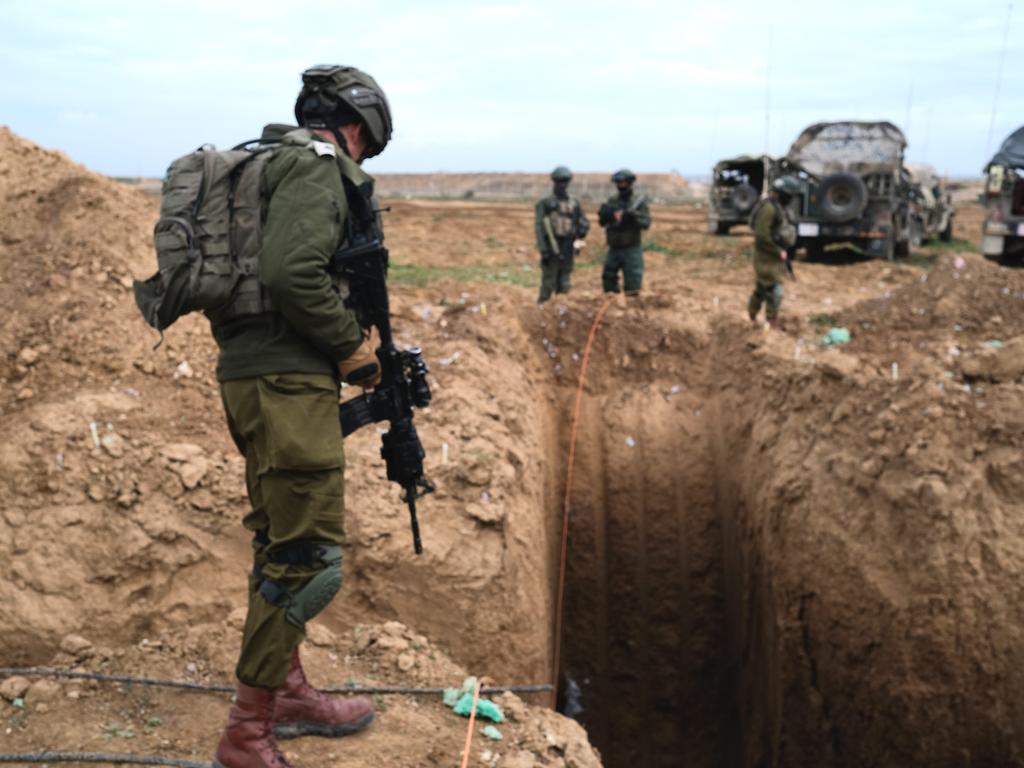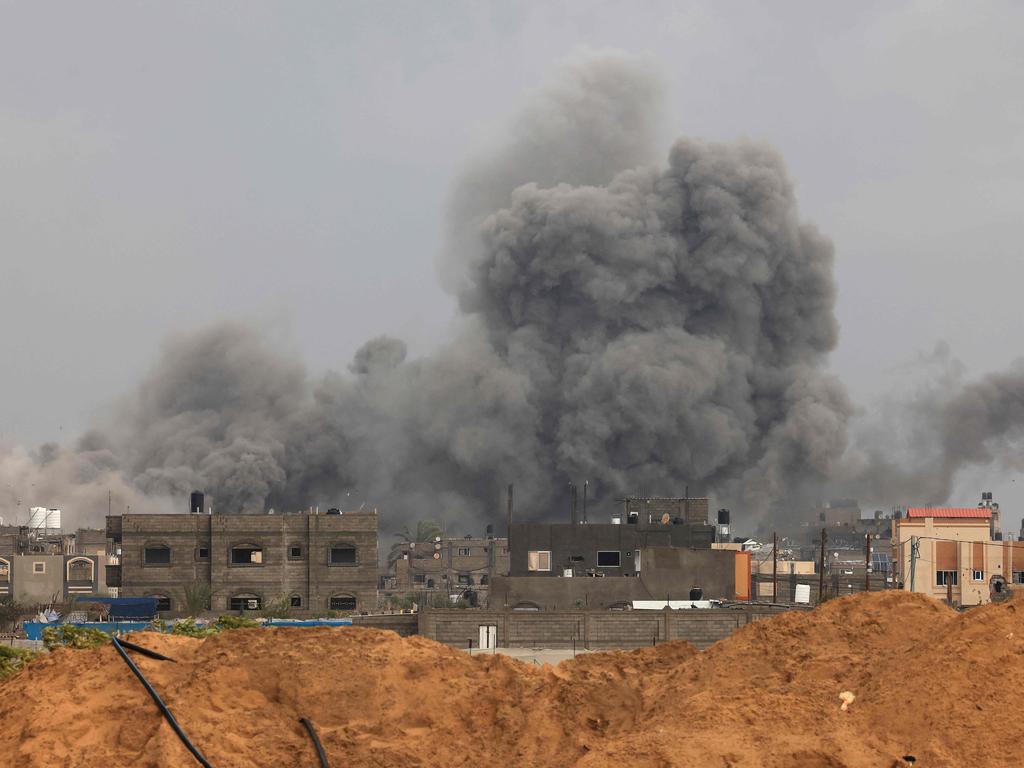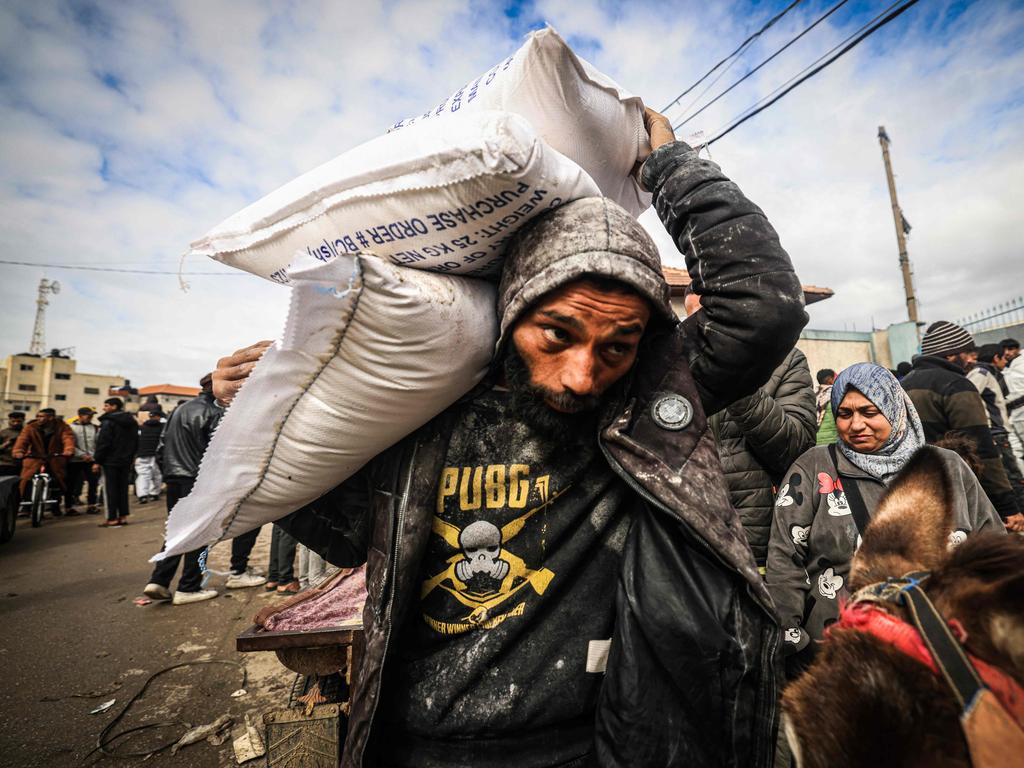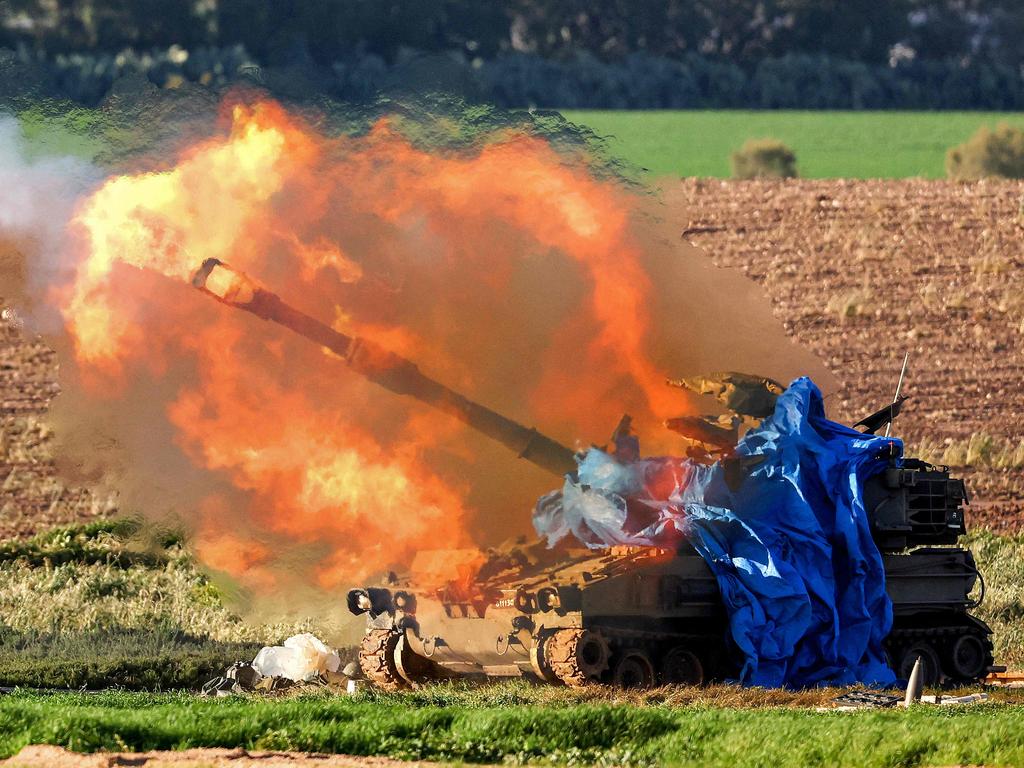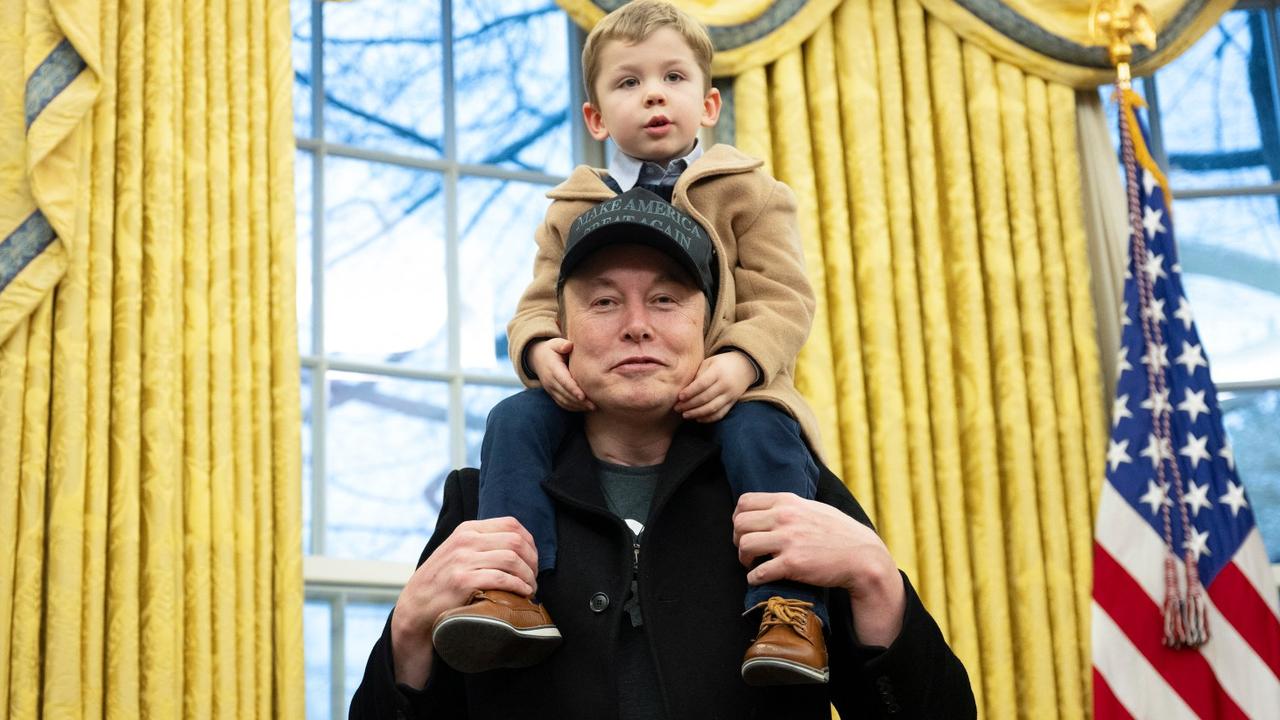The two-month battle for Khan Younis, the ‘safe’ city sheltering Hamas
With a web of Hamas tunnels underfoot, the Gazan city is under non-stop bombardment and those left there face an agonising choice.
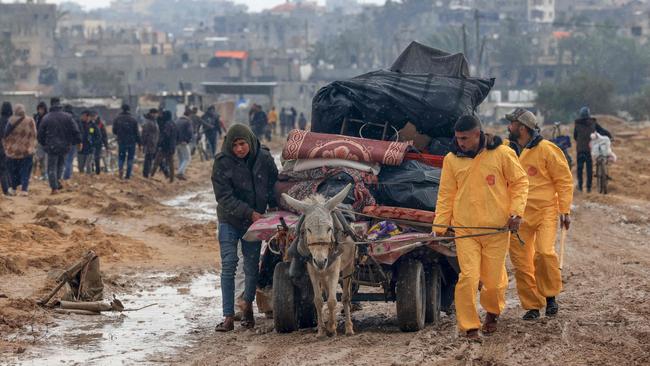
Nehad Abu Habel, a young mother, says she is sad, but not surprised, to see terror in the eyes of her children. They have witnessed horrors. Outside, bodies lie rotting in the streets. What were once homes are now rubble.
One evening last week, after an Israeli artillery shell shook the ground near the family’s tent in a hospital courtyard, one of her three boys, six-year-old Ameer, turned to her in tears and said: “Mama, I don’t want to die.”
Israel’s military calls its latest phase of the war in Gaza “low-intensity”. But that is not how it feels to the civilians caught up in it without enough food, water or medicine.
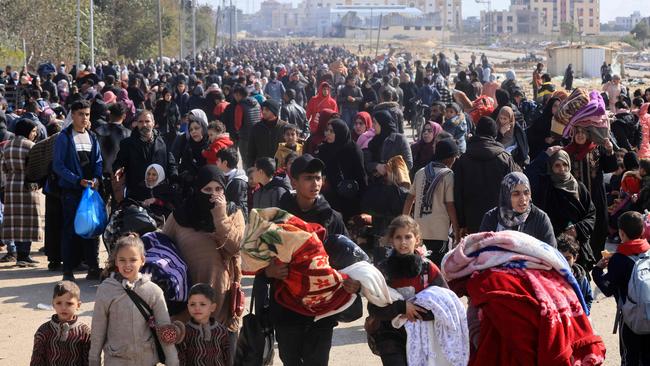
“We are surrounded, shells are coming from all around,” said Nehad, 31, who is camping with her husband, Ahmed, a builder, and their four children in the Nasser hospital complex in Khan Younis, Gaza’s second city.
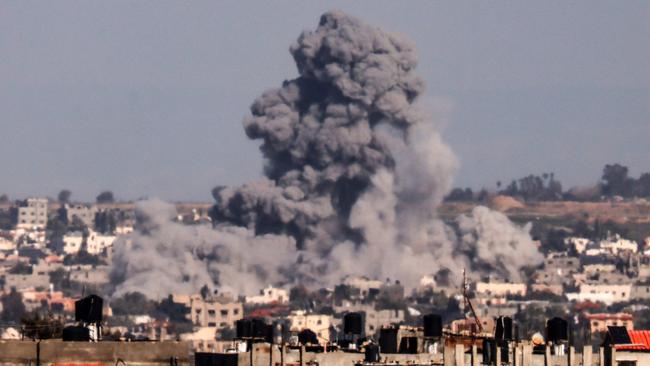
The Abu Habels fled there from the north, where their home was destroyed by a missile, in the belief that Khan Younis was a safe haven. Tens of thousands of other Palestinians made similar journeys, by foot, car and donkey cart. Now most of them have moved again to stay alive. More than half of Gaza’s 2.3 million people are homeless and crammed into an area further south near the Egyptian border.
Nehad and her family must decide whether to join them.
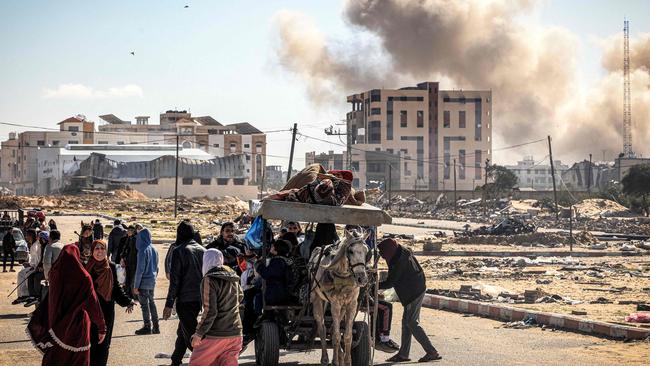
Far from a safe haven, Khan Younis has become the main focus of Israel’s military campaign to eradicate Hamas, the organisation responsible for the worst terrorist attack in the country’s history: the massacre of 1200 people, mostly civilians, on October 7.
Since before December 5, when Israeli troops entered its suburbs, the city has been subjected to relentless shelling in which more than 4000 Palestinians are claimed to have been killed and about half the buildings have been destroyed or damaged, according to analysis of satellite imagery.
“Khan Younis is the command centre for Hamas, it’s the organisation’s military centre of gravity,” said Kobi Michael, a professor at Israel’s Institute for National Security Studies. It sits above a network of tunnels built over several decades with Qatari money and Iranian support that radiate outwards, “like a giant spider’s web”, he added. “There are literally hundreds of miles of tunnels, it’s bigger than the London Underground.”
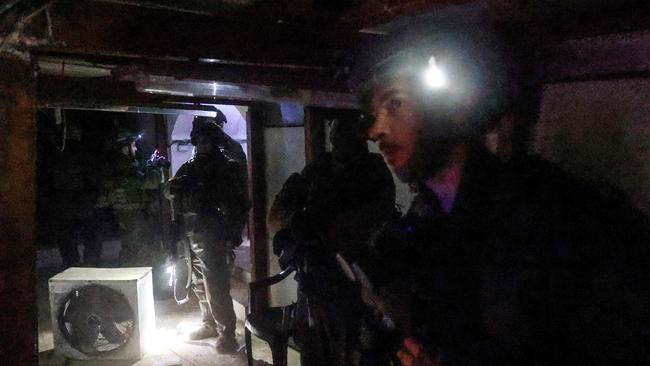
Military officials believe that Yahya Sinwar, 61, the Hamas leader in Gaza, and two of his top lieutenants, Mohamed Deif and Marwan Issa, are hiding deep beneath the city. Eliminating Sinwar - and his command infrastructure - is one of Israel’s two primary war aims. But doing this imperils the other objective: rescuing an estimated 136 of the more than 200 Israeli hostages Hamas seized on October 7. Some may have died but most are still being held as “human shields”.
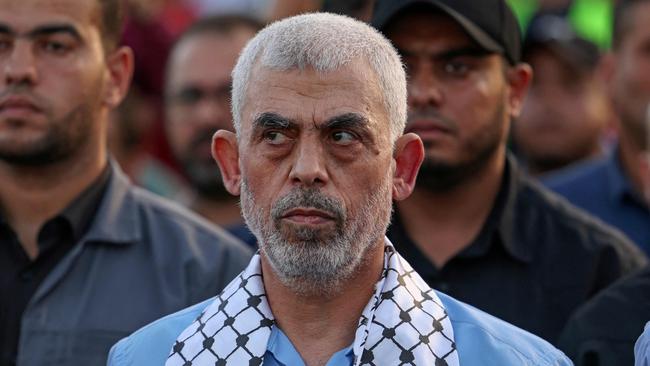
The ferocity of the fighting makes heavy civilian casualties almost impossible to avoid.
“We are fighting above and underground simultaneously, it’s complicated, slow and difficult,” said Dan Harel, a retired general who continues to receive military briefings. “In the underground battle, you have blast doors, all kinds of booby traps to deal with, you are constantly under the threat of having a tunnel collapse over you. In the battle above, there’s the constant danger of someone coming up from a tunnel to hit you from behind.”
Some passageways are 60 metres deep and reached by lifts. Many are big enough to drive through and packed with food, water, fuel and weapons. “It’s like an underground city,” Harel said.
The leaders’ luxury villas - now turned to rubble - had their own entrances into this lair.
“Virtually every second house contains either weapons, munitions or entries to the tunnels, and is defended, so we have to fight from house to house,” Harel said. Soldiers even found a tunnel starting under the Khan Younis cemetery. “They knew we’d never bomb a cemetery. It’s the same with the mosques and hospitals - there’s tunnel entrances under all of them.”
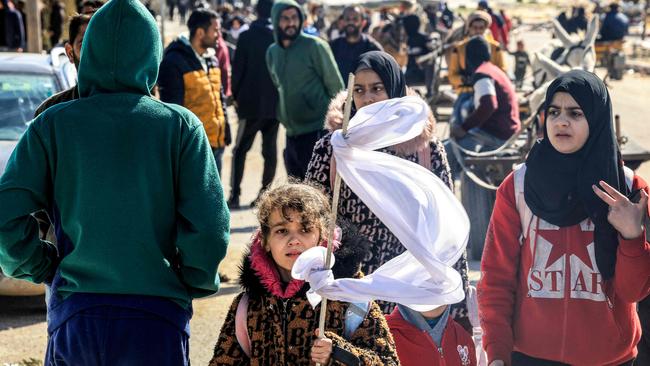
In spite of that, he believed Israeli soldiers were advancing, claiming that they had killed up to 12,000 Hamas combatants across the whole of Gaza, about 60 per cent of their entire force. Hundreds of others had been captured or fled south. “All they have to do is throw down their AK-47, put on their jeans and go.” Those who remain have regrouped into small cells, some targeting Israeli officers. Late last month 24 Israeli soldiers were killed in a single attack.
Sinwar is unlikely to concede meekly. “If he concludes that he is at the end of the road he might try to pull off some fiery spectacular, to go out in a very impressive manner, maybe taking many of the enemy with him, something that will be remembered among generations of Palestinians. He will not come out from the tunnel with his hands up and say, ‘Stop, I’m surrendering’, ” Michael said.
Khan Younis would be a symbolic venue for a last stand. Sinwar was born there in a refugee camp in 1962, when Gaza was under Egyptian rule. He became active in Palestinian politics at a young age but was jailed for life in Israel in 1989 for the killing of two Israeli soldiers and four Palestinian “collaborators” - one, allegedly, was buried alive in the Khan Younis cemetery. He was released after 22 years in 2011 along with 1026 other Palestinian prisoners exchanged for Gilad Shalit, an Israeli soldier held hostage by the Palestinians.
Some military officials believe Binyamin Netanyahu, the prime minister then and now, was hoodwinked by Sinwar, who had learnt Hebrew in prison and told interrogators he wanted a truce.
Netanyahu is now under pressure from a movement in favour of Israeli resettlement of Gaza - some of them Knesset members holding the balance of power in his coalition. They have threatened to walk out, prompting an election, if he approves another ceasefire and prisoner exchange.
Meanwhile, time is also running out for the Abu Habel family and others considering a move to Rafah on the Egyptian border to join some 1.3 million Palestinians who have have sought shelter there.
But safety is far from guaranteed. The coalition rightwingers are demanding that Israeli forces seize control of the southern border, through which weapons and other supplies have been smuggled in from Egypt. On Thursday Yoav Gallant, the defence minister, said Israeli forces would now turn to Rafah “to eliminate terrorist elements that threaten us”.
Mohamed Harara, a young volunteer doctor, says he, for one, will stay in Khan Younis, even if there is no medicine left to treat his patients and many have to lie on the floor because all of the beds are taken. “The dead and injured won’t leave me, the screams of a woman who lost a daughter, a mother who lost her sons, the crying of children left alone with no family,” he said. “But I’ll stay. If not, who will watch over the patients? I’ll stay by them until I die.”
THE SUNDAY TIMES

